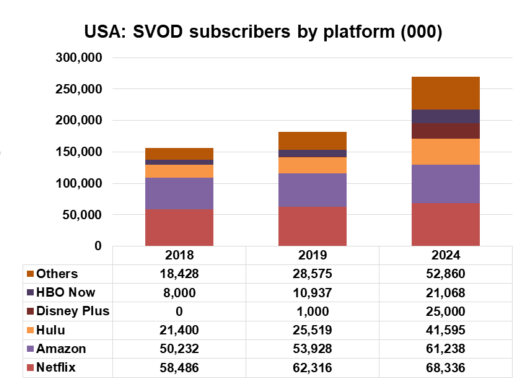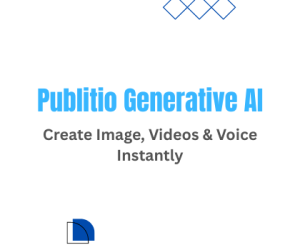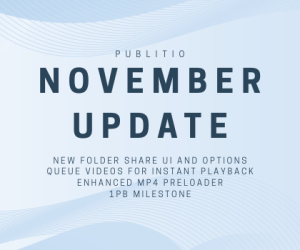At the moment, you might not even know what Video on Demand is, but we can assure you that you’re using it, probably, daily! So what is VOD? First of all, VOD stands for Video on Demand, and it refers to a content distribution platform that allows the video to be streamed whenever the user chooses. To say it plainly - The viewers click the link and start watching the video.
What is Video on Demand
Video on demand (VOD) is a service that allows users to access and watch video content on their own schedule, rather than having to watch it at a specific time. This can be a convenient and flexible way to consume video content, as it allows users to watch what they want, when they want, without having to adhere to a broadcast schedule. There are two main types of VOD services: subscription-based and transactional. Subscription-based VOD services, such as Netflix and Amazon Prime Video, allow users to access a large catalog of content for a monthly fee. Transactional VOD services, such as iTunes and Google Play Movies, allow users to purchase or rent individual movies or TV shows on a one-time basis. VOD services typically work by streaming video content to users over the internet. When a user selects a piece of content to watch, the service will establish a streaming connection between the user's device and a server that hosts the content. The video data is then sent over the internet in small packets, which are reassembled and played back on the user's device in real-time. VOD services can also provide users with additional features and functionality, such as the ability to pause, rewind, or fast-forward video content, or to access extra features such as closed captions or alternate audio tracks. Some VOD services also allow users to download content for offline viewing, which can be useful for situations where an internet connection is not available. In conclusion, video on demand is a service that allows users to access and watch video content on their own schedule. It is typically provided as a subscription or transactional service, and uses internet streaming technology to deliver video data to users in real-time. VOD services offer a convenient and flexible way to consume video content, and are becoming increasingly popular as more and more people access video content online.
Take a look at this embedded video from Publitio below - click it and it’ll start streaming. Congrats, you’re using a VOD! Some of the most popular VOD platforms are Youtube, Netflix, Vimeo, and many, maaany others.
Now, let’s dive into the specifics.
Types of VOD
Now that we know what a VOD is, it’s time to learn what types of VOD exist in the digisphere. The three major types of VOD are:
SVOD (Subscription Video on Demand)
AVOD (Advertising Video on Demand)
TVOD (Transactional Video on Demand)
These are divided based on the type of business, audience, goals, etc. But, let’s get into the nitty-gritty of these VOD categories, and help you decide which one suits you best.
SVOD (Subscription Video on Demand)
Want to easily monetize your videos? Then SVOD’s your guy!
Are you releasing content regularly to a dedicated base of viewers? Or perhaps you have a visual library that can be streamed many times? Looking to give your viewers the flexibility to pay for a monthly subscription without a long-term commitment? Or maybe you offer online classes, courses, and tutorials that are episodic in nature?
If the answer to any of these questions is yes, then SVOD is definitely the right option for you.
Some of the main benefits of opting for SVOD are:
A steady stream of revenue
A variety of subscription plans and options
Engaged and loyal subscribers
The ability to create and post exclusive material
But what are some things you need to keep in mind? First of all, your content needs to speak to your audience, they’re more likely to sign up and stick around if you have tailor-made content that can’t be found anywhere else on the internet. And when you have them hook, line and sinker you need to make sure you’re releasing content on a regular basis.
What’s a popular SVOD? Netflix
Source: Digital TV Research
TVOD (Transactional Video on Demand)
TVOD or Transactional video on demand is the act of buying or renting a piece of content. Your viewers decide when they’d like to pay for a specific video instead of subscribing for a whole month and accessing your whole library. It’s usually used for larger audiences, that aren’t as consistent.
If you want to distribute timely and exclusive material, rent or buy videos and reach a wider audience then TVOD is the perfect solution for you.
What’s a popular TVOD? Amazon Prime Video
AVOD (Advertising Video on Demand)
And then there’s AVOD or Advertising Video on Demand. So, you stream your content for free - but viewers have to watch ads. AVOD works best for those who have a large viewer base, since every individual ad pays a small-ish amount of money, and requires a lot of views for any significant income. You can easily implement AVOD when using Publitio, and monetize your videos with VAST Ad tags.
With AVOD it’s much easier to grow your viewer base, the content itself is free, just need to watch the ads. It’s a scalable revenue solution, and available to a wider audience.
What’s a popular AVOD? Youtube
Why is VOD so important?
VOD revolutionized the way people consume media - it offers the viewers freedom to choose when, where, and how they will interact with the videos. No longer are they tied to the programming schemes of the broadcaster - with VOD they can choose exactly what they want.
The rise in popularity of videos over the recent years has affected the usage of VOD - and production has been booming to keep up with the demand and the past two years only fueled the fire. The future is bright for VOD for the time being, and if you’re looking to create your own platform, it will likely pay off - viewers are happy to pay for valuable content when it’s convenient and accessible.
Live streaming vs VOD
Let’s cover our bases first - A live stream is a video transmitted in real-time using the internet. It is recorded and transmitted at the same time. On the other hand, VOD is videos that you can access on-demand i.e. anytime you’d like. The main difference is that VODs are prerecorded videos, and live streams are broadcasted at the time of recording.
Some of the factors that make live streaming a great choice are its immediacy, real-time interaction, and low barrier to entry - anyone can stream their videos, you only need an internet connection, phone, and a social media profile. But if you prefer investing more time in your production, being creative, and allowing your audience to consume your content at their convenience - then VOD should be the perfect choice for you. Just don’t forget, you can always repurpose your live content for on-demand viewing.
Netflix is a perfect example of a VOD service, you can access its content any time you’d like, and a good example of a live streaming service is Twitch, where content creators stream themselves playing video games, cooking, or doing pretty much anything else you can think of.
OTT video streaming
OTT or over-the-top streaming refers to platforms and technologies that allow video streaming via the internet with direct distribution of video material to users, bypassing traditional media routes such as cable TV and broadcasting stations.
What differentiates OTT from VOD is that OTT actually determines the way in which the content is delivered to viewers and provides the technology for its distribution while VOD is a way of describing how the viewers interact with the content.
OTT offers many benefits as opposed to traditional media. Just to name a few:
Watch content anytime anywhere
Real-time data and metrics
Content segmentation
Great user experience across devices
What makes a great VOD streaming service?
Did we manage to convince you that starting a VOD streaming service is a good choice for you? Good! Now let’s go through some of the essential steps you need to cover before you officially start streaming.
One of the first things to determine is your niche. So, you need to determine what kind of videos you want to sell? But make sure that there’s a demand for that niche, even the best-produced videos are worth nothing if there’s no one to watch them.
Now ask yourself, who’s your target audience? Ask yourself the following questions: what does your audience have in common? What do they want from watching your video? What can you bring to the table that no one else is?
After you’ve figured this out, you need to choose your platform, one that allows you to upload, share, protect and monetize your videos. Doing this from scratch is also good, but a long, costly and complicated journey. Publitio is one of the platforms that offer all of this and more.
Now that you’ve chosen your platform, you need to choose a pricing model, either SVOD, TVOD, or AVOD which we covered in one of the previous paragraphs.
With all of the technicalities set up, it’s time to upload and organize your content, spruce up your website, and set up the marketing tools which will lead your audience back to you.
You’re good to go!
What is the future of VOD?

The future is bright for this one! The global VOD service market is expected to reach a valuation of US$ 183.93 Bn by 2031 and the projected annual growth rate for VOD is worth a staggering 8.5% between 2021 and 2031 according to Future Market Insights. The advancements in network speed are only helping the ongoing growth of the VOD market by enabling HD content and higher streaming rates.
How to grow your business using VOD?
It’s no secret that the demand for VOD is at an all-time high, outshining even the popularity of live streaming. Some of the most obvious benefits of VOD are how easy to use and versatile it is. Want to monetize your videos? You can do that with a few clicks. Looking to scale? You can scale up infinitely - the more viewers, the better. All you need is a good video hosting provider (cough, Publitio, cough). And the best thing is that no matter how small or big your business is - you can undoubtedly benefit from implementing VOD.
If you ask us, this definitely is the bandwagon you should get on and harness the power of VOD to scale your business.
Conclusion
It’s no secret that people want their desired content and they want it now. They even aren’t opposed to paying for it, if you produce quality content. And setting up your own VOD service has never been easier, with Publitio, you get everything you need to create your own video-on-demand service in a matter of clicks. Click here to check out our pricing plans, or try our 14-day free trial!






